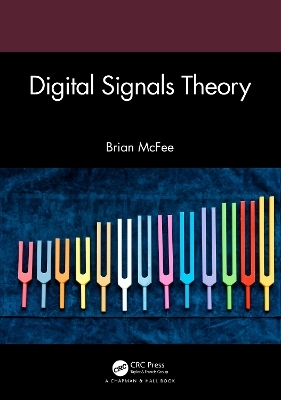
Digital Signals Theory
Seiten
2023
Chapman & Hall/CRC (Verlag)
978-1-032-20050-7 (ISBN)
Chapman & Hall/CRC (Verlag)
978-1-032-20050-7 (ISBN)
This class-tested textbook provides a comprehensive introduction to the fundamentals of digital signal processing in a way that is accessible to all.
Where most introductory texts to the field of digital signal processing assume a degree of technical knowledge, this class-tested textbook provides a comprehensive introduction to the fundamentals of digital signal processing in a way that is accessible to all.
Beginning from the first principles, readers will learn how signals are acquired, represented, analyzed and transformed by digital computers. Specific attention is given to digital sampling, discrete Fourier analysis and linear filtering in the time and frequency domains. All concepts are introduced practically and theoretically, combining intuitive illustrations, mathematical derivations and software implementations written in the Python programming language. Practical exercises are included at the end of each chapter to test reader knowledge.
Written in a clear and accessible style, Digital Signals Theory is particularly aimed at students and general readers interested in audio and digital signal processing, but who may not have extensive mathematical or engineering training.
Where most introductory texts to the field of digital signal processing assume a degree of technical knowledge, this class-tested textbook provides a comprehensive introduction to the fundamentals of digital signal processing in a way that is accessible to all.
Beginning from the first principles, readers will learn how signals are acquired, represented, analyzed and transformed by digital computers. Specific attention is given to digital sampling, discrete Fourier analysis and linear filtering in the time and frequency domains. All concepts are introduced practically and theoretically, combining intuitive illustrations, mathematical derivations and software implementations written in the Python programming language. Practical exercises are included at the end of each chapter to test reader knowledge.
Written in a clear and accessible style, Digital Signals Theory is particularly aimed at students and general readers interested in audio and digital signal processing, but who may not have extensive mathematical or engineering training.
Brian McFee is Assistant Professor of Music Technology and Data Science at New York University. He develops machine learning tools to analyze music and multimedia data. This includes recommender systems, image and audio analysis, similarity learning, cross-modal feature integration, and automatic annotation.
Signals. Digital Sampling. Convolution. The Discrete Fourier Transform. Properties of the DFT. DFT Invertibility. Fast Fourier Transform. Time Frequency Representation. Frequency Domain Convolution. Infinite Impulse Response Filters. Analyzing IIR filters. Appendix.
| Erscheinungsdatum | 18.10.2023 |
|---|---|
| Zusatzinfo | 132 Line drawings, color; 132 Illustrations, color |
| Sprache | englisch |
| Maße | 178 x 254 mm |
| Gewicht | 520 g |
| Themenwelt | Kunst / Musik / Theater |
| Informatik ► Theorie / Studium ► Künstliche Intelligenz / Robotik | |
| ISBN-10 | 1-032-20050-2 / 1032200502 |
| ISBN-13 | 978-1-032-20050-7 / 9781032200507 |
| Zustand | Neuware |
| Informationen gemäß Produktsicherheitsverordnung (GPSR) | |
| Haben Sie eine Frage zum Produkt? |
Mehr entdecken
aus dem Bereich
aus dem Bereich
Buch | Softcover (2024)
REDLINE (Verlag)
20,00 €
Eine kurze Geschichte der Informationsnetzwerke von der Steinzeit bis …
Buch | Hardcover (2024)
Penguin (Verlag)
28,00 €


